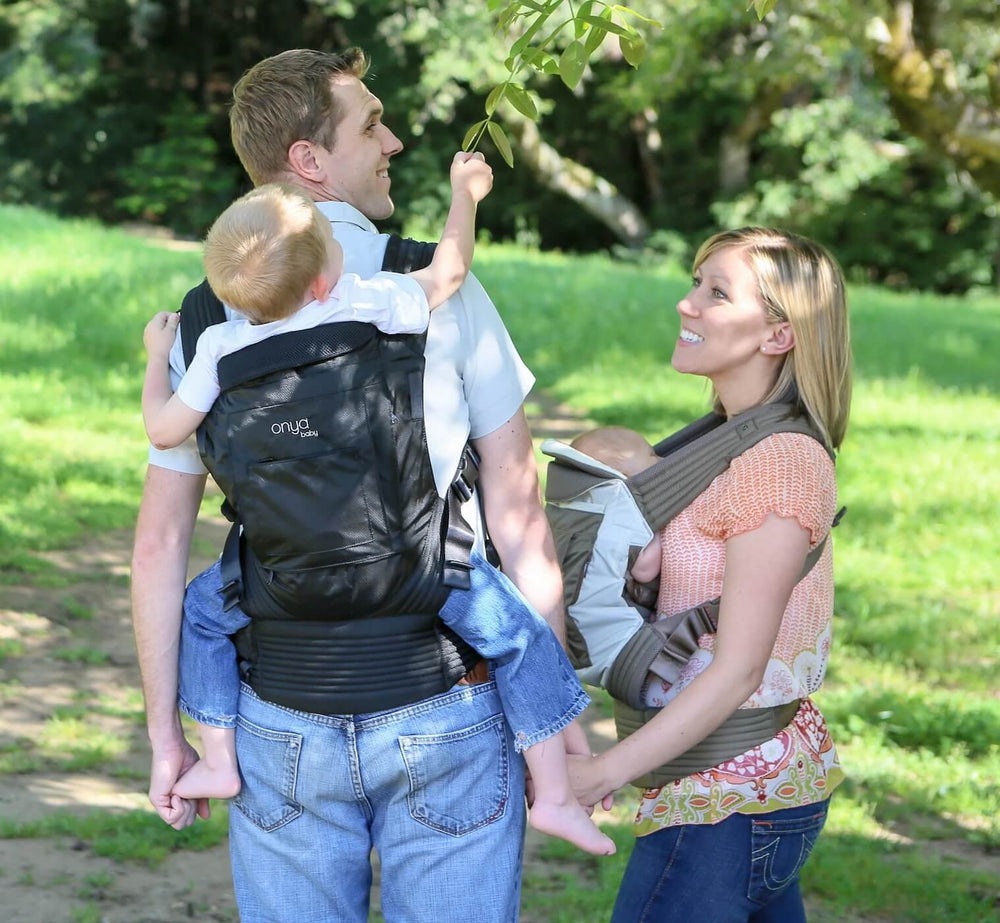Babywearing Around the World
Babywearing is a natural human tradition that just makes sense. People have been using various combinations of materials (such as cloth, woven straw and/or leather) to carry their babies to keep them safe and close throughout the ages. How else could we, as parents with young children, get anything done? We thought we’d share some beautiful images of babywearing around the world. There are more such images in the informative and interesting book Beloved Burden – Baby-wearing around the World by I.C. van Hout. If you’re interested in babywearing from a historical perspective, it’s a great book to have in your library. It would also be a great addition to your local babywearing group’s library.

Mother with child in a simple Kenyah carry basket. The edges are decorated with fabric, while the basket is constructed of wood and rattan. Additional embellishments are snail shells (for the dried umbilical cord), a taro shoot and small pieces of taro root. These objects are important and ceremonial for chut tanah, a naming ritual when the child touches the earth for the first time. (Lang Moh, Baram River, Sarawak, Malaysia, c.1975. Photo: H.L. and P.R. Whittier)

Mother with child in an amaarngut. Greenland Inuit women and girls usually carry babies and small children on their backs in the hood of a garment designed specifically for this purpose (much like an amauti used by North American Inuit women). The amaarngut not only keeps both mother and child warm and safe, but it is also an expression of the continuity of life, and the concept of renewal is closely associated with the garment. Girls, and occasionally boys, wear an amaarngut from an early age. Adult women wear one following the birth of their first child, and can easily breastfeed her child without removing the garment. Children are carried in an amaarngut until they can walk, as well as after they can walk when the need arises.

(Left) An image of a Mr. De Bosch Kamper carrying a child in a baby carrier of his own design. From the Dutch magazine De Vrouw en Haar Huis (Woman and Her Home). Photo c. 1915.

(Above) Ebira women in Okunchi, West Nigeria, weave on upright looms. The child is content and safe wrapped to his mother’s back while the mother is able to complete her task. Photo: B. Menzel, c. 1992
Whether you carry your baby in a sling, wrap or soft structured baby carrier, you’re a part of an ancient human tradition. No matter how you do it, it just makes sense, doesn’t it?
All images credited to: Beloved Burden – Baby-wearing around the world. Ed. I.C. van Hout – Amsterdam: Royal Tropical Institute
Happy babywearing!








